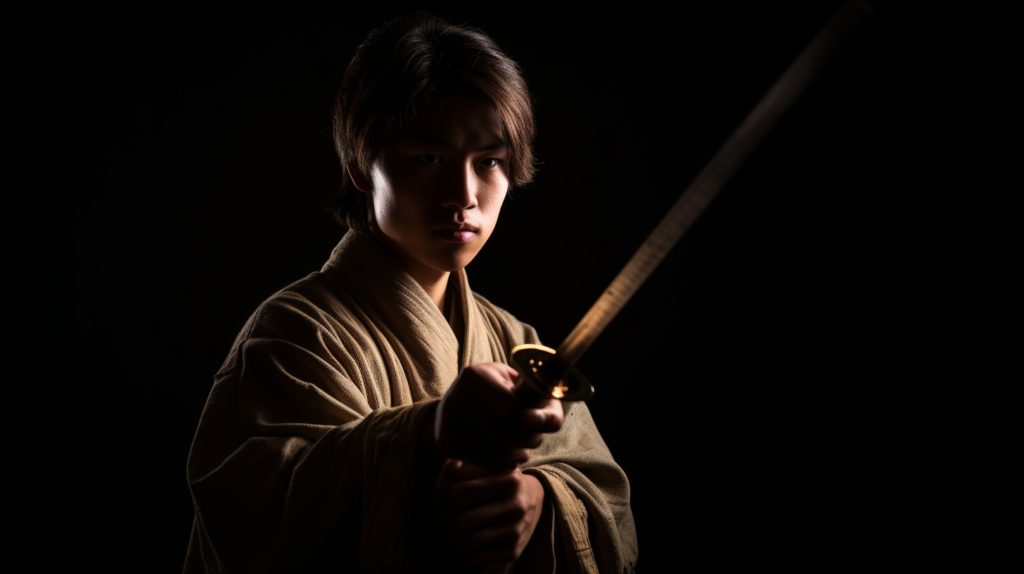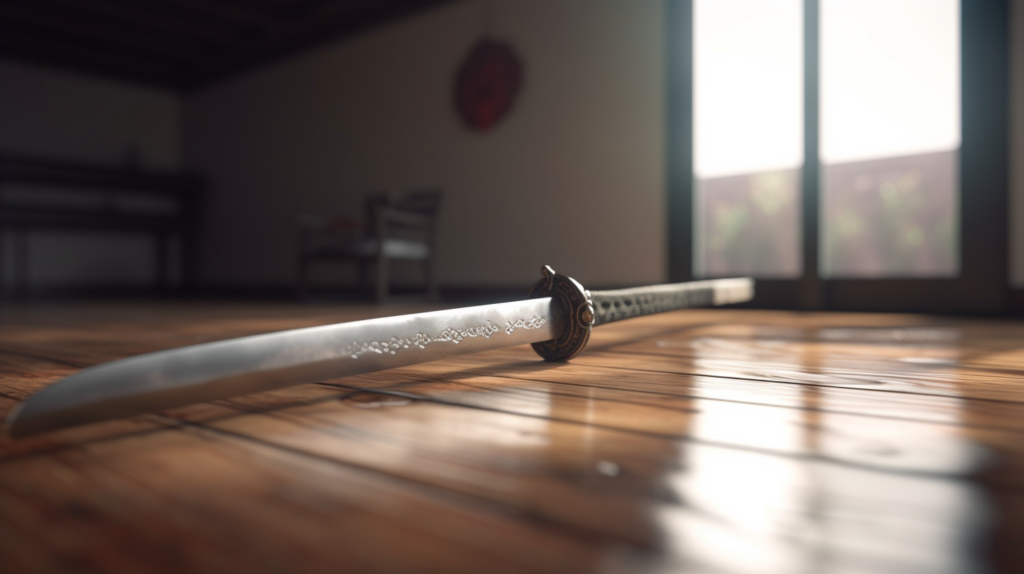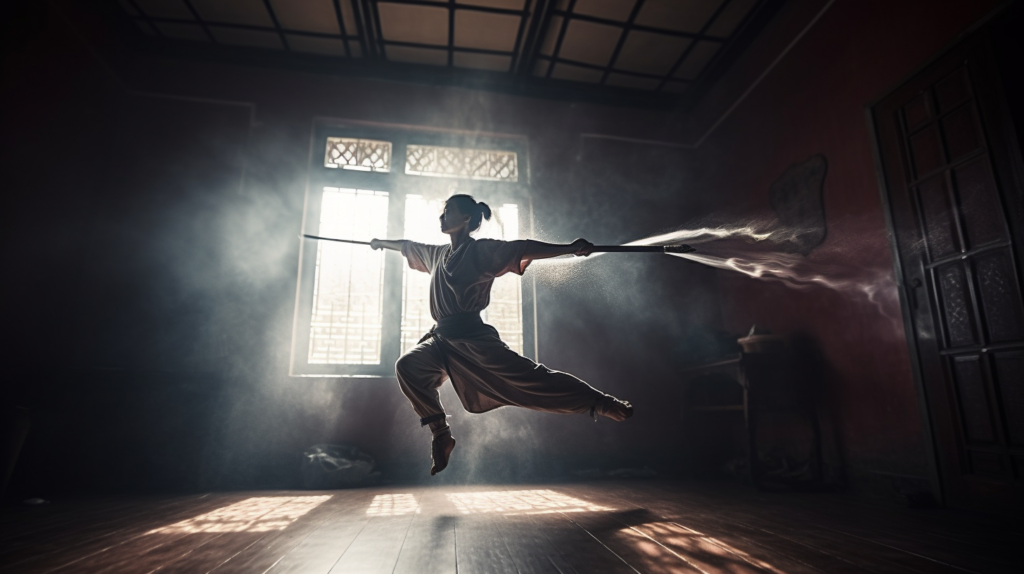Introduction to Wushu Sword – The Art that Makes You Go “Woah!”
Have you ever watched an action movie with jaw-dropping wushu sword fights that made you think, “Man, I wish I could wield a sword like that?” Well let me introduce you to the world of wushu sword fighting, where your dreams can become a reality!
Wushu is a stunning Chinese martial art that dates back thousands of years. It combines athletic prowess with grace and beauty in such a way that it can leave even the toughest critic speechless. While there are many different styles and weapons used in wushu, today we’re focusing on one specific weapon: the wushu sword.
The Anatomy of a Wushu Sword – It’s What’s on the Inside That Counts
To truly master this ancient art form, one must first understand the makeup of their primary tool – the wushu sword itself. Comprised of four main parts – blade, guard, handle (hilt), and pommel – each component has its own unique purpose and adds to the overall balance and effectiveness of this incredible weapon.
The blade is typically made from high-quality stainless steel or carbon steel for strength and durability. It can range from flexible to rigid depending on your preference for practicing those sick moves you see in movies.
The guard protects your precious fingers from meeting an untimely end during those intense sparring sessions or training accidents (oops!). After all, you need those fingers for more than just sword training.
The handle, or hilt, is where your hand grips the sword. It’s usually wrapped in cloth or leather to provide a comfortable and secure grip. No one wants a slippery sword when they’re trying to impress their friends with their newfound skills!
Lastly, the pommel sits at the end of the handle and acts as a counterweight to balance the blade – it’s like having an anchor for your sword that keeps things steady while you slice and dice through the air.
Sword Styles – Variety is the Spice of Life

Wushu combines various traditional Chinese martial arts styles into one visually stunning form. As such, there are several different sword styles to choose from when it comes to mastering this martial art:
- Straight Sword (Jian): The elegant weapon of choice for quick, precise movements and flicks of the wrist. Think fencing but with a wushu twist!
- Broad Sword (Dao): A single-edged blade perfect for sweeping cuts and powerful strikes – ideal for those who want to feel like they’re hacking through enemy lines like a true warrior.
- Double Swords: Why have one when you can have two? With double swords, you can dazzle your audience (or attackers) by demonstrating ambidextrous mastery.
Choose one style or try them all – the choice is yours! Practicing multiple styles can lead to improved coordination, strength, and overall awesomeness.
How to Become One with Your Sword – Patience
Becoming a master of wushu swordsmanship takes time, patience, and dedication. Start by finding a qualified instructor or school that specializes in wushu to guide you on your path to sword-wielding greatness.
During your training, you’ll learn various stances, footwork, and techniques that will help you build a foundation for your sword skills. Be prepared to practice these movements over and over (and over) again – repetition is key to truly mastering this art form.
As you progress through your training, you’ll eventually start learning forms (or routines), which are choreographed sequences of movements that showcase the beauty and power of wushu. These forms can be performed individually or in groups and are often set to music, adding an extra layer of artistic expression.
Finally, it’s essential to practice regularly and with intent. As the wise martial artist Bruce Lee once said, “I fear not the man who has practiced 10,000 kicks once; I fear the man who has practiced one kick 10,000 times.” So too must you practice each movement of your wushu sword until it becomes second nature.
The Benefits of Wushu Sword Training – Not Just for Show!

Taking up wushu sword training offers a wealth of benefits beyond just looking cool (though that’s definitely a big plus). Here are some reasons you might consider picking up this ancient art form:
- Physical Fitness: sword training is a full-body workout that improves flexibility, balance, coordination, and strength. Seriously, have you seen the muscles on those practitioners? They’re like walking advertisements for the benefits of wushu.
- Mental Focus: Wushu swordsmanship requires intense concentration and precision, which can help sharpen your focus and mental clarity in other areas of life as well. Say goodbye to zoning out during important meetings or while folding laundry!
- Stress Relief: There’s something incredibly satisfying about slicing through the air with a sword after a long day at work or school. Plus, the meditative aspects of wushu practice can help calm the mind and alleviate stress.
- Self-Defense Skills: While we hope you never have to use your wushu sword skills in a real-life self-defense situation, knowing that you have the ability to protect yourself can provide an invaluable sense of confidence and security.
- Social Connections: Joining a wushu weapons class or club can be an excellent way to meet new people who share your interests and passion for martial arts (and wielding awesome weapons).
Essential Gear for Your Journey – Looking Sharp!
Before embarking on your wushu sword training adventure, it’s essential to gather some crucial gear that will ensure both your safety and success:
- The Sword: Of course, you’ll need a wushu sword! Consult with your instructor or school to get recommendations on choosing the right type and quality of sword for your skill level and training needs.
- Proper Attire: Traditional wushu uniforms, called “wushu changquan” or “wushu taolu,” are designed to allow for maximum range of motion and comfort during practice. They typically consist of a top, pants, and optional sash that represents your rank or style.
- Protective Gear: Although wushu swords may not have sharp edges, accidents can still happen. Wearing protective gear such as gloves, forearm guards, and shin guards can help prevent injuries during practice or sparring sessions.
- Sword Maintenance Kit: To keep your wushu sword in tip-top shape, invest in a maintenance kit that includes cleaning cloths, oil (for lubrication), and a sharpening stone (if needed). A well-maintained sword is essential for peak performance!
The Cultural Significance – More Than Just Martial Arts

Wushu has deep roots in Chinese history and culture that extend beyond mere combat techniques. Much more than just a martial art or sport, wushu represents an entire philosophy that embodies harmony between the mind, body, and spirit.
The practice of wushu swordsmanship is infused with elements of Chinese folklore, religion (particularly Taoism), and ancient philosophies such as yin-yang balance and the Five Elements Theory.
By learning the art of the wushu sword fighting, you’re not only acquiring physical skills but also connecting with centuries-old traditions that teach respect for one’s opponent, discipline in the face of adversity, and humility in victory.
It’s worth noting that wushu sword fighting has made its way into popular culture through film, television, and literature – particularly in the “wuxia” genre. Wuxia is a Chinese fiction genre featuring martial artists with exceptional skills who use their abilities to uphold justice and fight against evil. By studying wushu sword, you’re joining the ranks of these mythical warriors and heroes!
Competing in Wushu Sword Fights – Show Off Your Skills!
For those looking for an extra challenge, consider participating in wushu sword competitions. These events allow practitioners from around the world to showcase their talents and vie for titles in various categories, such as individual forms, group forms, and sparring.
Competing can be an excellent opportunity to measure your progress, receive feedback from judges, and learn from other skilled practitioners. Plus, it’s a great way to bolster your confidence as you perform under pressure.
To prepare for a competition, work closely with your instructor or coach to perfect your form and practice performing in front of others. Remember that while winning is exciting, the true value lies in the experience gained and friendships forged along the way.
With this comprehensive guide at your disposal, you’re now well-equipped to embark on your journey toward becoming a wushu sword master! Remember that patience, dedication, and practice are key – mastery won’t happen overnight.
So grab your sword (and maybe some protective gear), find a qualified instructor or school, and enter the captivating world of wushu swordsmanship. Happy training!

